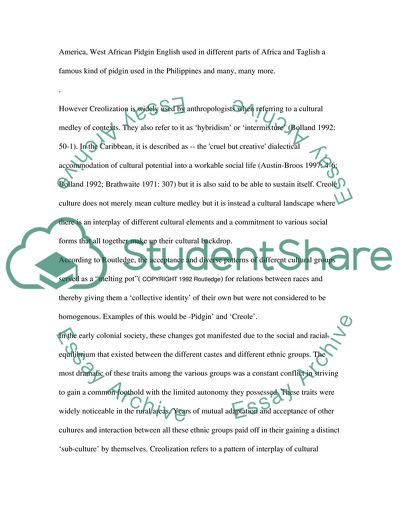Cite this document
(Pidgins and Creoles Essay Example | Topics and Well Written Essays - 1500 words, n.d.)
Pidgins and Creoles Essay Example | Topics and Well Written Essays - 1500 words. https://studentshare.org/humanitarian/1707017-are-pidgins-and-creoles-different-from-other-languages
Pidgins and Creoles Essay Example | Topics and Well Written Essays - 1500 words. https://studentshare.org/humanitarian/1707017-are-pidgins-and-creoles-different-from-other-languages
(Pidgins and Creoles Essay Example | Topics and Well Written Essays - 1500 Words)
Pidgins and Creoles Essay Example | Topics and Well Written Essays - 1500 Words. https://studentshare.org/humanitarian/1707017-are-pidgins-and-creoles-different-from-other-languages.
Pidgins and Creoles Essay Example | Topics and Well Written Essays - 1500 Words. https://studentshare.org/humanitarian/1707017-are-pidgins-and-creoles-different-from-other-languages.
“Pidgins and Creoles Essay Example | Topics and Well Written Essays - 1500 Words”. https://studentshare.org/humanitarian/1707017-are-pidgins-and-creoles-different-from-other-languages.


